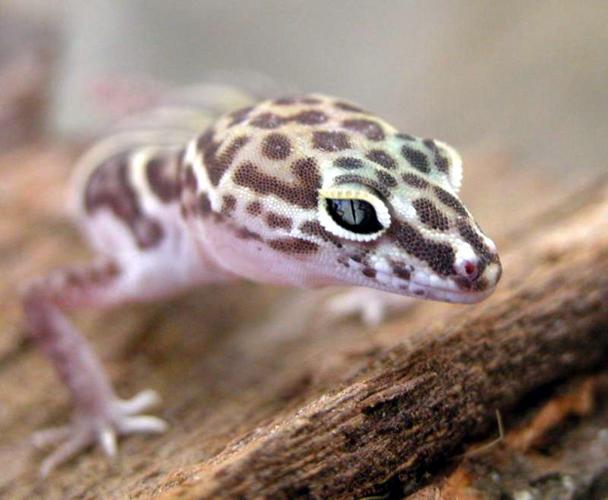Over the years I have often been called to remove “baby Gila Monsters” from garages, patios and gardens of residents only to find a Banded Gecko. This soft, delicate and fragile 4-6 inch lizard hardly seems rugged enough to survive in the Sonoran desert. Unlike other desert lizards the gecko has fine scales and a pinkish almost human looking skin. In addition to this soft skin this reptile has long slender toes without the sharp claws of the Gila Monster and other lizards.
The gecko is also the only desert lizard with a voice. When disturbed they will emit a faint squeak. As faint as this is, it would hardly scare off a larger predator. Many birds or other animals that would go after the Gecko for a meal would likely end up with just the tail. Geckos like many other lizards will drop off their tail to escape from whatever has grabbed them. When dropped off, the tail will attract the attacker by twisting and writhing; this will gain the attention of the attacker allowing the lizard to escape. In time the gecko will grow a new tail.
The Geckos are opportunistic in their food habits; they seek a wide variety of arthropods, beetles, insect larvae, termites and spiders. The Western Banded Gecko stalks its prey like a cat; the animal fixes its elliptical pupils on the prey, holds its undulated body and tail just above the ground, slowly advances, and vibrates its tail tip just before striking.
Years ago when my granddaughter was here for a visit we went out on the desert to look for “critters.” Under a log we came across a banded gecko so we brought it home and placed it in a terrarium so she could watch it feed. She named it “Slippy." After she left I took it back to where we found it and turned it loose. Every year before she came back for a visit I had to go out and find “Slippy” and put in the terrarium so she could see him. Finally, when she was in college she let me know that she knew I wouldn’t keep one in captivity. I was relived because they weren’t always easy to find.
The gecko only lays one or two eggs each year so it is evident that this species has developed good survival skills which would include being a nocturnal animal and able to reach depths in burrows where it can survive the temperature extremes in the desert.





